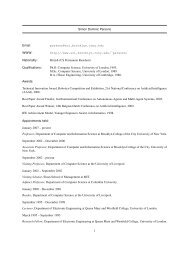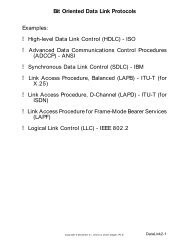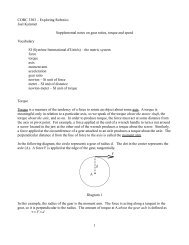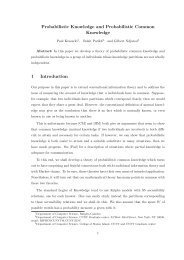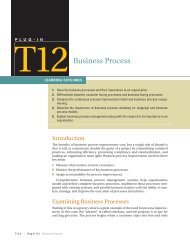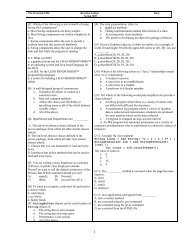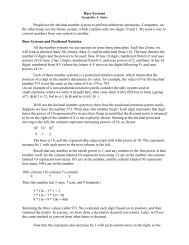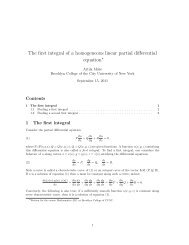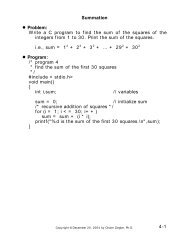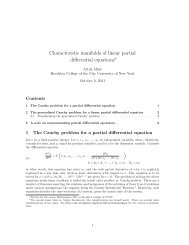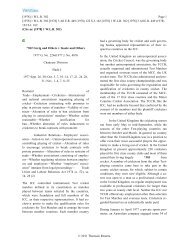Chapter 5: Architecture - Computer and Information Science - CUNY
Chapter 5: Architecture - Computer and Information Science - CUNY
Chapter 5: Architecture - Computer and Information Science - CUNY
Create successful ePaper yourself
Turn your PDF publications into a flip-book with our unique Google optimized e-Paper software.
5.1. BITS AND QUBITS 3<br />
A bit is either in state |0〉 or in state |1〉, which was sufficient for the classical<br />
world. Either electricity is running through a circuit or it is not. Either a switch<br />
is on or it is off. Either a proposition is true or it is false. But either/or is not<br />
sufficient in the quantum world. In that world, there are situations where we<br />
are in one state <strong>and</strong> in the other simultaneously. In the realm of the quantum<br />
world, there are systems where a switch is both on <strong>and</strong> off. One quantum<br />
system can be in state |0〉 <strong>and</strong> in state |1〉. Hence we are led to the definition<br />
of a qubit:<br />
Definition 5.1.1 A quantum bit or a qubit is a way of describing a quantum<br />
system of dimension two.<br />
We shall represent a qubit as a two by one matrix with complex numbers<br />
[ ]<br />
0 c 0<br />
, (5.3)<br />
1 c 1<br />
where |c 0 | 2 + |c 1 | 2 = 1. Notice that a classical bit is a special type of qubit.<br />
|c 0 | 2 is to be interpreted as the probability that after measuring the qubit, it<br />
will be found in state |0〉. |c 1 | 2 is to be interpreted as the probability that<br />
after measuring the qubit it will be found in state |1〉. Whenever we measure a<br />
qubit, it automatically becomes a bit. So we shall never “see” a general qubit.<br />
Nevertheless, they do exist <strong>and</strong> are the main characters in our tale. We might<br />
visualize this “collapsing” of a qubit to a bit as<br />
<br />
[1, 0] T<br />
[c 0 , c 1 ] T<br />
[0, 1]. T (5.4)<br />
Following the normalization procedures that we learned in chapter 4 on page<br />
???, any element of C 2 can be converted into a qubit. For example, the vector<br />
⎡ ⎤<br />
V = ⎣ 5 + 3i ⎦ (5.5)<br />
6i



